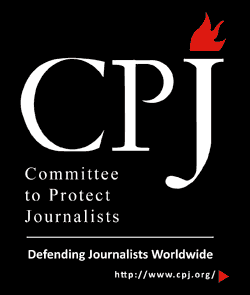

































This week, I created the last three advertisement for the Global Journalist.
In the ad for the World Editors Forum I I combined both the logos of the World Editors Forum and their owner World Newspapers Association. At first I had trouble putting the elements together in a harmonious way. In my first version, I put the logo of the World Newspapers Association next to its full name. But I later decided to put it in the middle of the page, so that there would be a consistent central axis for the whole ad layout.
With the ad for the Freedom House, I created a bar for the explanation of the Freedom House with a triangle extended, so that it is associated with a roof as a word play with the name of the organization.
With the ad for the ad for the Inter American Press Association, I created a structure of the Z letter for the eye movement.
My efforts to find a way to embed a Google map on the magazine’s Web site still got nowhere. I talked with an IT trainer about this and she said I needed to change the way I put my Google API key. I did, but nothing changed. I wrote to another trainer to ask for his help and I’m still waiting to hear from him. I believe that it is a matter of time before we need to find a way to embed the map on the Web site of the magazine. The current map is put a Web site of a third party and they put ads on the site which often cover parts of the map.
RESEARCH:
I began recreating a Web site for my research on ad placements. I followed my committee chair’s advice on choosing a real news Web site, so that the reactions to the ads are more realistic. I chose the Website of the Global Journalist, as its structure and content more simple than other news Web site. I hope to finish it by the end of this week.












For this week, I began designing the advertisements for some press organizations for the Web site of the Global Journalist. I came out with the drafts of two ads, one for the International Press Institute and one for the Committee to Protect Journalists.
I used the Adobe Illustrator to trace the logos manually to reproduce the effects as accurately as possible. I decided to stick to one size for all the ads 250 pixels – 350 pixels, so that the layout will stay consistent.
In my first two drafts, I only had the logo and their full names in them. My supervisor Pat Smith’s recommendation was that I needed to have a short explanation of what the organizations were about. This is a valid point, although I originally assumed that it is quite clear with their names what they did.
However, as there are as many as eight organizations with somewhat similar functions, explanations will be useful to distinguish them one from the others. Jacob Nielsen * (2004) commented that users appreciate the ad that tells them what would happen when they click at it and presents enough information without making the reader having to leave the page.
On the other hand, I believe I will need to find the shortest explanations possible, because a lot of text on the ads is not helpful to keep a reader’s attention on the ads. I want to make the most of the shape of the logos to bring appeal to the ads.
I personally felt that my first attempts with the ads are a little simplistic. On the other hand, I am guarded against experimenting too much (for example with shapes and colors), as I am not sure how that will go down with the organizations. As I look at their Web sites, the way they advertise is also very simple.
I am also thinking about what I can do to improve the look of the site. One thing I noticed is many stories do not have photos to go with them. What I am thinking is whether I should create a library of maps of countries and territories. This is what the BBC’s Web site often does when they do not have photos, for example for breaking news stories, when the photos have not come in yet. They also use maps for the countries’ profiles.
*Nielsen, J. (2004) The most hated advertising techniques. http://www.useit.com/alertbox/20041206.html

